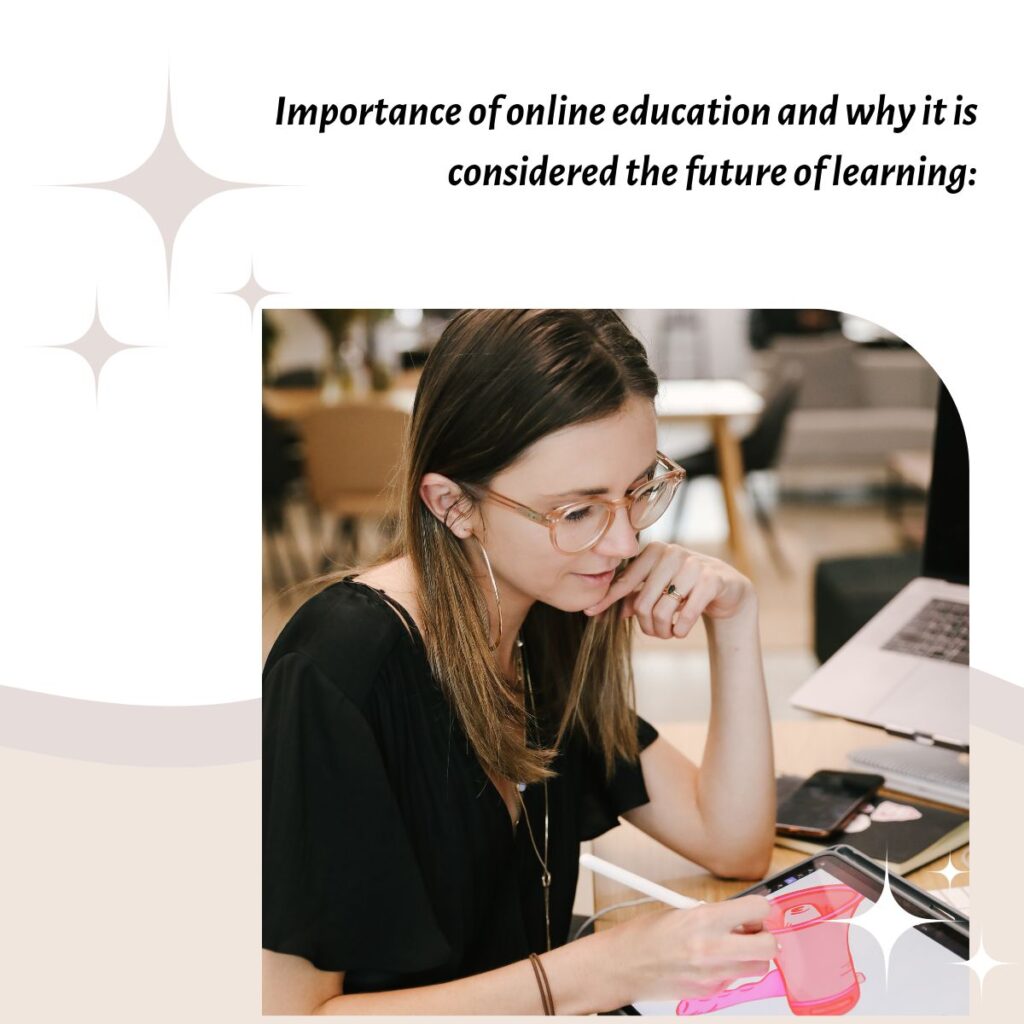Simple and Effective Tips for Engaging Virtual Learners
In the digital age, online education is essential, providing flexibility, accessibility, and diverse learning opportunities. To succeed in online teaching, educators need effective strategies to engage students and create meaningful learning experiences. This blog offers practical tips for educators to enhance student engagement and achieve positive learning outcomes in the virtual classroom. By following these strategies, educators can navigate online teaching confidently and ensure a rewarding educational journey for their students.

Importance of online education and why it is considered the future of learning:
Adaptability to the Digital Age: Online education aligns with the digital era we live in. It leverages technology and digital tools to deliver educational content, fostering digital literacy skills that are essential for success in the modern world.
Global Reach and Connectivity: Online learning transcends geographical boundaries, allowing students to connect and collaborate with peers and educators from around the world. It promotes a global perspective, cultural exchange, and diverse learning experiences.
Lifelong Learning and Skill Development: Online education emphasizes lifelong learning by providing opportunities for individuals to upskill, reskill, and pursue continuous personal and professional development. It equips learners with the knowledge and skills needed to adapt to a rapidly evolving job market.
Flexibility and Convenience: Online learning offers unparalleled flexibility, enabling students to study at their own pace and convenience. It eliminates the constraints of fixed schedules, allowing learners to balance education with work, family, and other commitments.
Personalized Learning Experience: Online education provides personalized learning experiences tailored to individual needs and learning styles. With adaptive learning technologies and data-driven insights, students can receive customized instruction and feedback to optimize their learning journey.
Cost-effectiveness and Affordability: Online education often comes at a lower cost compared to traditional education. It eliminates expenses such as commuting, accommodation, and physical learning materials, making education more accessible and affordable for a wider range of learners.
Diverse Learning Resources: Online learning platforms offer a wealth of resources such as multimedia content, interactive simulations, virtual labs, and online libraries. These resources enhance engagement, cater to various learning preferences, and facilitate deeper understanding of concepts.
Continuous Innovation and Up-to-date Knowledge: Online education keeps pace with emerging trends and advancements in various fields. Through online courses, students can access the latest information, research, and industry practices, ensuring they acquire relevant and up-to-date knowledge.
Career Advancement Opportunities: Online education provides opportunities for career advancement and professional growth. It offers specialized courses, certifications, and degree programs that enhance job prospects and equips learners with in-demand skills sought by employers.
Scalability and Access to Expertise: Online education enables scalability, reaching a larger number of learners without the limitations of physical infrastructure. It also provides access to renowned experts and educators worldwide, creating a dynamic learning environment and fostering a rich exchange of ideas.
Online education is poised to shape the future of learning by offering flexibility, connectivity, and personalized learning experiences. As technology continues to evolve, online learning will play a pivotal role in providing accessible, affordable, and high-quality education to learners across the globe.
Tips for enhancing online teaching:
Create Engaging Multimedia Content: Use a variety of multimedia elements such as videos, animations, and interactive presentations to make the online learning experience more engaging and dynamic. Visual aids and multimedia content can help clarify complex concepts and capture students’ attention.
Incorporate Gamification Elements: Gamify the learning experience by integrating interactive quizzes, leaderboard systems, and virtual rewards. Gamification enhances student motivation, promotes healthy competition, and encourages active participation.
Foster Peer Collaboration: Facilitate opportunities for students to collaborate and work together on projects, assignments, or discussions. Utilize online collaboration tools and platforms that enable real-time interaction, group work, and shared document editing.
Leverage Virtual Field Trips and Guest Speakers: Bring real-world experiences into the virtual classroom by organizing virtual field trips or inviting guest speakers to share their expertise. Virtual tours, industry professionals, or subject matter experts can provide unique insights and enrich students’ understanding.
Encourage Self-reflection and Metacognition: Incorporate activities that prompt students to reflect on their learning process and develop metacognitive skills. Encourage them to identify their strengths, weaknesses, and strategies for improvement, fostering a deeper understanding of their own learning.
Use Polls and Surveys for Engagement: Integrate live polls, surveys, or interactive quizzes to gauge student understanding and gather feedback. These tools promote active participation, allow for instant feedback, and provide valuable insights into students’ learning progress.
Implement Virtual Office Hours: Schedule regular virtual office hours to offer one-on-one or small group sessions with students. This dedicated time allows for personalized support, addressing individual questions, and providing additional guidance.
Promote Asynchronous Discussions: Encourage students to engage in asynchronous discussions using discussion boards or online forums. This allows for thoughtful reflection, and in-depth conversations, and encourages students to share diverse perspectives.
Provide Timely and Constructive Feedback: Deliver prompt and constructive feedback on assignments, assessments, and student participation. Clear and timely feedback helps students understand their progress, areas for improvement and fosters a supportive learning environment.
Create a Welcoming Online Community: Foster a positive and inclusive online learning environment by promoting active communication, mutual respect, and collaboration among students. Encourage students to engage in discussions, share ideas, and provide support to one another.
Remember, these tips can be adapted to suit your teaching style and the specific needs of your students. Implementing these strategies can enhance student engagement, promote a sense of community, and create an enriching online learning experience.


